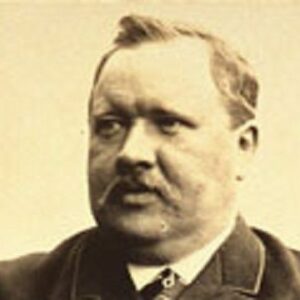Svante August Arrhenius, a Swedish physicist, became one of the most significant scientists in history. He was a kid prodigy who excelled in the sciences and showed early aptitude for maths. His main interests were in chemistry, and Arrhenius was a key proponent of what is now called physical chemistry. Arrhenius was Sweden’s leading scientist for most of his life, and his work on the greenhouse effect is a 21st century benchmark research. Svante Arrhenius is the ‘father of climate change’ studies, and all subsequent research is based on his discoveries. Aside from the greenhouse effect, he is known for his work on electrolytic dissociation. Because of his research, Arrhenius is generally referred to as a physical chemist. Continue reading to learn more about his life and contributions to chemistry.
Early Childhood of Svante Arrhenius
Svante Arrhenius was born on February 19, 1859 in Vik, Sweden, to Svente Gustav and Carolina Thunberg Arrhenius. His father worked at the ‘Uppsala University’.
By 1862, Arrhenius, age 3, had learned to read and was the talk of the town. Using his father’s accounting books, he also learned math.
Svante Arrhenius graduated from Uppsala’s prestigious cathedral school in 1876, the school’s youngest ever graduate.
At the age of 17, he enrolled at ‘Uppsala University’ to study physics, chemistry, and mathematics. Arrhenius graduated two years later.
Arrhenius left Uppsala University in 1881 to study under Erik Edlund at the Swedish Academy of Sciences in Stockholm, unsatisfied with his physics tutor.
A Career of Svante Arrhenius
In 1884, he presented his dissertation to the ‘Swedish Academy of Sciences’, which had 56 theses, most of which would be considered perfect today.
In his 1884 dissertation, he demonstrated that a solution of salts and water is a good conductor of electricity. While his teachers were unimpressed, physical chemists Rudolf Clausius and Wilhelm Ostwald were.
The Swedish Academy of Sciences granted Arrhenius a fellowship in 1886 to travel and research with famous scientists including Ostwald and Boltzmann.
Between 1885 and 1890, he studied cosmic physics while continuing to make significant advances in electrolytic dissociation theory.
Svante was appointed as a physics lecturer at Stockholms Hogskola, today known as Stockholm University, in 1891. He stayed there for four years before being elevated to professor.
In 1896, he began researching how changes in carbon dioxide levels affect climate and temperature. He called it the ‘Greenhouse Effect’, and it remains one of the most important studies on climate change.
From 1901 until his death, he was a member of the Nobel Committees for Physics and Chemistry.
Grandiose of Svante Arrhenius
Svante Arrhenius wanted to make science and scientific thinking more accessible to the general public, thus he wrote ‘Worlds in the Making’ in 1908. It was a hugely popular book, translated into many languages.
Honors and Honours
The Royal Society of London awarded Arrhenius the ‘Davy Medal’ in 1902 for his pioneering study on dissociation theory.In 1903, he was awarded the 3rd Nobel Prize in Chemistry for his breakthrough in the research of the ‘Greenhouse Effect,’ which remains one of the most important studies in the history of science.
Life and Legacy
Svante married his student Sofia Rudbeck in 1894, but they divorced in 1895. His first son was Olof Vilhelm Arrhenius. Olof became a chemist.
Arrhenius married Maria Johansson in 1905. And he and Maria have two kids.
On October 2, 1927, this famous chemist died of inflammatory bowel illness. He died in Uppsala at the age of 68.
His major contributions to science and the world were the dissociation hypothesis and the ‘Greenhouse Effect’.
Estimated Net Worth
Svante is a well-known and wealthy biologist. Svante Arrhenius net worth is estimated at $15 Million by Wikipedia, Forbes, and Business Insider.


